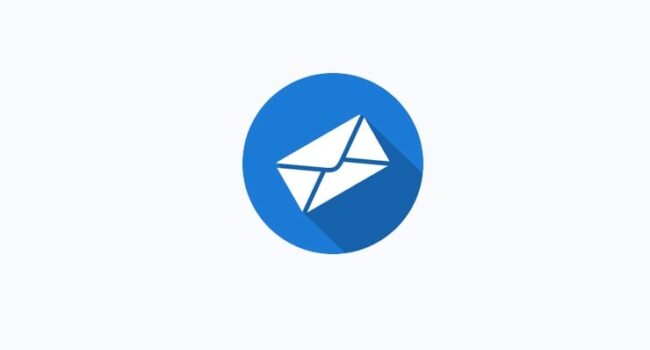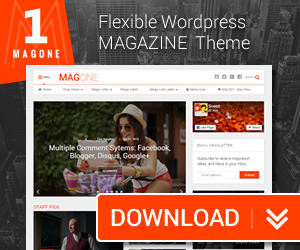In a world ruled by rapid communication and dynamic digital interactions, visuals have taken the lead in how users perceive, understand, and engage w
In a world ruled by rapid communication and dynamic digital interactions, visuals have taken the lead in how users perceive, understand, and engage with information. Icons—once purely functional—have become aesthetic tools used to express identity, style, and emotion. Among the most recognized and frequently used icons is the mail icon. But today’s design world asks for more than clarity and symbolism. It demands beauty, emotion, and branding. Enter the mail aesthetic icon.
This article explores the evolution, relevance, design principles, and creative use of mail aesthetic icons in modern digital platforms. We’ll look at how such a small design element can carry visual weight and elevate user experience across various industries.
The Origins of the Mail Icon
To appreciate its transformation, we must first understand where the mail icon comes from. The classic envelope symbol stems from physical mail. In earlier computing environments—like Windows 95 and early Macintosh systems—icons were small bitmap graphics with little room for creativity. The envelope represented one thing: email.
This convention stuck because of its immediate recognizability. Today, even children and people with limited digital literacy can identify an envelope icon as a message-related function. It’s universal and timeless.
But as design evolved from mere usability to also focus on aesthetics, the mail icon transformed into something more flexible and expressive.
What Is a Mail Aesthetic Icon?
A mail aesthetic icon is a stylized or design-enhanced representation of the traditional mail symbol. It still indicates communication or messaging but with a visually pleasing twist that aligns with a particular aesthetic—be it minimalist, elegant, playful, vintage, or futuristic.
These icons are used across various platforms, including websites, apps, personal portfolios, newsletters, e-commerce pages, and even social media bios.
Aesthetic icons are often part of curated icon packs, crafted to provide consistency in visual storytelling. The mail icon within such a set isn’t just a clickable object—it’s a branded, styled statement that fits into a bigger visual system.
Why the Mail Aesthetic Icon Matters More Today
1. It Builds Visual Hierarchy
A beautifully styled mail icon stands out in a crowd of plain UI elements. It can subtly guide a user’s attention toward important actions like subscribing or contacting support.
2. Enhances Emotional Design
Users respond emotionally to visuals. A soft, pastel mail icon might make a wellness site feel more inviting, while a bold, modern version might suit a tech startup. This emotional design improves engagement.
3. Supports Brand Identity
Every visual component, no matter how small, should reflect a brand’s voice. The mail icon—often used on contact pages or signup forms—is part of that voice. When aesthetic, it blends seamlessly with fonts, colors, and other design choices.
4. Encourages User Interaction
People are naturally drawn to attractive elements. A mail icon that’s visually appealing invites users to click, fill out forms, or subscribe, leading to better interaction rates.
Design Styles That Dominate the Mail Aesthetic Icon Scene
1. Minimalist Line Icons
Characterized by thin strokes, clean geometry, and often monochrome palettes, these icons are popular in SaaS interfaces, portfolios, and modern blogs.
2. Pastel and Soft Styles
Using light tones, rounded edges, and gentle gradients, these icons evoke warmth and calmness—ideal for lifestyle, mental health, and creative platforms.
3. Claymorphic/3D Icons
These icons use soft shadows and volumetric design, mimicking a clay-like texture. They offer a tactile, fun experience, especially suitable for mobile apps, educational tools, and children’s content.
4. Vintage and Hand-Drawn Icons
With sketchy lines or retro color palettes, these icons invoke nostalgia. They’re perfect for artisan brands, indie blogs, and retro-themed interfaces.
5. Animated Icons
Dynamic icons—such as an envelope that opens when hovered or sends a letter in motion—add a layer of interactivity and fun.

Applications of Mail Aesthetic Icons in UI/UX
A mail aesthetic icon can be used in more ways than you might think. Here’s where it truly shines:
1. Newsletters and Subscriptions
Icons placed next to subscription fields or CTAs (calls to action) help visually indicate the function. A styled mail icon can increase trust and curiosity, improving conversion rates.
2. Contact Us Forms
Replacing the boring default mail icon with an aesthetic one can uplift the user experience and strengthen brand impression.
3. Mobile Navigation
In mobile apps, space is limited. Icons must be expressive yet compact. A well-designed mail icon can fit neatly into toolbars while remaining intuitive.
4. Social Media Branding
Many digital creators use icons in their social link aggregators (like Linktree) or Instagram highlights to represent communication. The right aesthetic enhances professional presentation.
5. Business Cards and Email Signatures
Even in static formats like business cards or email footers, a good-looking mail icon contributes to a polished, modern appearance.
Choosing the Right Mail Aesthetic Icon for Your Project
When selecting or designing a mail icon, consider the following:
✔ Audience
What kind of users are you targeting? A children’s brand might need a colorful, cartoon-style icon, while a law firm may prefer something subdued and minimal.
✔ Brand Colors and Fonts
The icon should complement your visual identity, not clash with it. Consistency is key in maintaining a cohesive experience.
✔ Platform and Size
Will the icon be used on a large screen or mobile device? Will it appear small in a footer or large on a landing page? These factors affect stroke thickness, detail level, and file format.
✔ Static vs. Animated
If your platform supports animation, you can use an interactive icon. Otherwise, focus on getting the perfect static version.
Creating Custom Mail Aesthetic Icons: A Step-by-Step Guide
You don’t need to be a master illustrator to design your own. Here’s a simple roadmap:
- Start with a Sketch – Outline your envelope symbol, keeping in mind proportions and balance.
- Choose a Tool – Use Figma, Illustrator, Canva, or even Procreate depending on your comfort.
- Pick a Style – Decide if you want flat, 3D, hand-drawn, or pastel.
- Add Details or Simplify – Use curves, shading, or minimal lines to give it personality.
- Export in Multiple Sizes – Create SVG (for websites), PNG (for static use), and maybe a Lottie file (for animation).
Best Practices for Using Aesthetic Icons
- Use in Moderation: Don’t overload your interface with too many decorative icons—balance functionality with beauty.
- Pair with Text When Necessary: Especially in accessibility-focused design, pairing icons with labels improves clarity.
- Test for Clarity: Show your icon to someone unfamiliar with your design. Can they still tell it’s a mail icon?
- Optimize File Sizes: Especially for mobile apps, ensure that your icons are lightweight to avoid performance issues.
How the Mail Icon Reflects Communication Trends
We’ve come a long way from handwritten letters to emails, messaging apps, and DMs. Yet the envelope remains symbolic of connection. Today, aesthetic versions of this icon don’t just stand for email—they represent:
- Customer support
- Team collaboration
- Direct messaging
- Contact forms
- Professional outreach
- Content subscriptions
As communication becomes more digital yet more personal, users expect interfaces to feel both functional and human. Aesthetic mail icons meet that expectation perfectly.
FAQs: Mail Aesthetic Icon
Q1. What exactly defines an icon as “aesthetic”?
An aesthetic icon goes beyond function. It is designed to be visually pleasing and to align with a certain artistic or branding theme, using intentional color, shape, and style.
Q2. Where are mail aesthetic icons most often used?
They are common in websites (contact forms, subscription popups), apps (inbox symbols, message features), social platforms (email links), business cards, and digital portfolios.
Q3. How do I make sure my icon remains readable at small sizes?
Keep shapes simple, use proper padding, and test the icon in 16px, 24px, and 48px sizes to ensure legibility.
Q4. Can I use free icons for commercial use?
Only if the icon’s license allows commercial use. Always double-check licenses—even with free libraries—and attribute where necessary.
Q5. Which file format should I choose for web use?
SVG is best for web use due to its scalability, small file size, and responsiveness. For raster versions, PNG is common.
Q6. How do I animate a mail icon?
Use CSS for simple hover effects, or Lottie animations for more dynamic movements. Tools like After Effects and Haiku Animator help create Lottie animations.
Q7. Do aesthetic icons improve conversions?
They can, especially when thoughtfully designed and used in high-impact areas like CTAs or forms. They enhance user trust and engagement.
Conclusion: Small Icons, Big Impressions
The mail aesthetic icon is a reminder that even the smallest elements in design deserve attention. While its roots lie in simple symbolism, its modern form carries emotion, beauty, and identity.
As we continue to blur the lines between functionality and aesthetics in digital spaces, icons like these serve as visual bridges—connecting users not just to features, but to experiences. Whether you’re a solo designer, a brand strategist, or a developer working on your next project, never underestimate the impact of a beautifully designed mail icon.
More Info Visit: onlinemrkting



COMMENTS